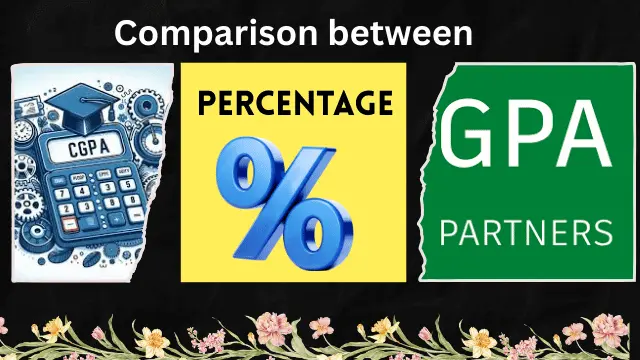So here’s the thing. You study hard, get marks, and for years, it’s all about percentages. Life is simple. You do well in school, see your marks as percentages, and life is fine.
Then one day you fill out a college form or think about applying abroad, and boom. They’re asking for CGPA or GPA. And suddenly you’re stuck wondering, “Wait, how is this different from percentage?”
I’ve been there too. It’s confusing because every place uses a different system. But once you see how they work, it’s honestly not that scary.
CGPA – your all-round average
Cumulative Grade Point Average is abbreviated as CGPA. It is only the average of all your grades. It’s out of 10.
It’s like the overall report card. Maybe you nailed math but messed up in history. CGPA mixes it all together. So instead of one bad subject dragging you down, you still look fine overall.
Why bother with CGPA at all? Because it gives a bigger picture. Maybe you killed it in science but struggled in history. Instead of letting one subject ruin everything, CGPA blends it all together.
Example: 8.0 CGPA roughly comes out as 76%.

GPA – one slice of the pie
GPA (Grade Point Average) is basically the same idea, but smaller. It’s usually for just one semester or one year.
And here’s the twist: GPA is usually on a 4-point scale and super common in the US, Canada, and Europe.
So if you’ve got a 3.7 GPA out of 4, that’s considered excellent. In percentage language, think 90%+.
Quick way to remember:
- CGPA = whole degree
- GPA = one term
- It’s super common in the US, Canada, and Europe.
- Most schools there use a 4-point scale.
Percentage – the good old classic
This one’s the simplest. It’s just the marks you scored divided by total marks, multiplied by 100. This is the one we all know. Marks ÷ Total × 100.
Say you got 450 out of 500. That’s 90%. Simple.
But not every country cares about percentages. If you’re applying abroad, they’ll probably want your GPA instead.
Side-by-side
| System | Scale | Covers | Where you see it |
| CGPA | Out of 10 | Whole course | India, Asia |
| GPA | Out of 4 | Semester/year | US, Canada, Europe |
| Percentage | Out of 100 | Exact marks | Pretty much everywhere in schools |
Converting between them (roughly)
- CGPA → Percentage: multiply by 9.5
(Example: 8 × 9.5 = 76%) - Percentage → GPA (4 scale):
- 85–100% = 4.0
- 70–84% = 3.0–3.9
- 50–69% = 2.0–2.9
- 85–100% = 4.0
- CGPA → GPA:
- 10 CGPA ≈ 4.0
- 7.5 CGPA ≈ 3.0
- 10 CGPA ≈ 4.0
⚠️ But yeah, every college has its own formula. Don’t blindly trust “universal conversions” from random websites.
Which one should you care about?
Depends where you’re headed.
- Studying in India/Asia? You’ll deal with percentages/CGPA.
- Going abroad? GPA is the big one.
- Looking for jobs? Companies usually say something like “60% or 7.0 CGPA minimum.”
So none of them is “better.” They’re just different systems saying the same thing.
Final thought
At the end of the day, all three systems do the same job — they show your academic performance. Whether you’ve got a 9 CGPA, a 3.8 GPA, or a 90%, it’s all good. These are just numbers written in different ways. What matters is you did the work.
